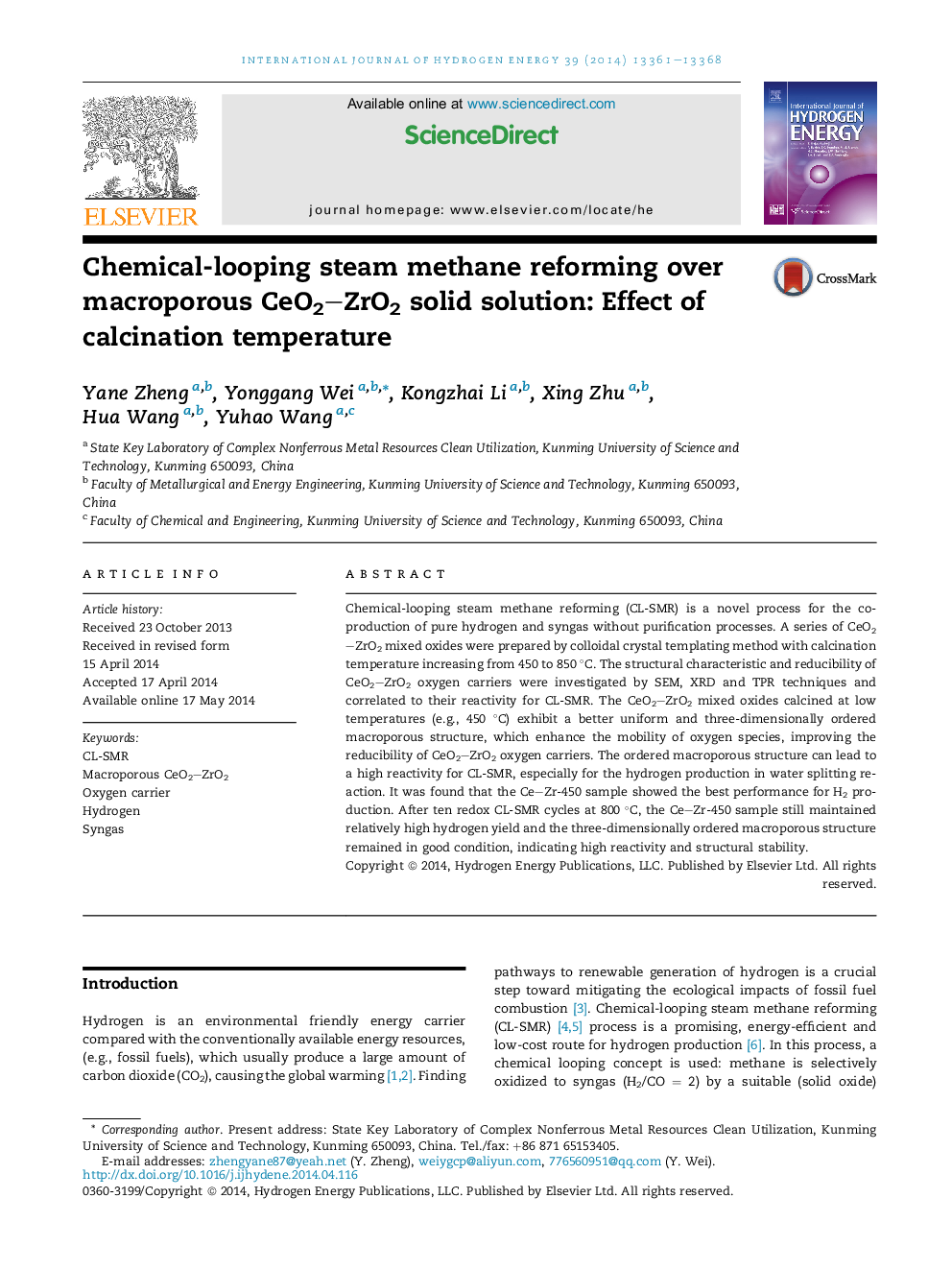| کد مقاله | کد نشریه | سال انتشار | مقاله انگلیسی | نسخه تمام متن |
|---|---|---|---|---|
| 1272625 | 1497484 | 2014 | 8 صفحه PDF | دانلود رایگان |

• Ordered macroporous structure could improve reactivity in CL-SMR.
• Macroporous sample with higher stability in structure and thermal.
• Macroporous Ce–Zr-450 sample showed the best performance for H2 production.
Chemical-looping steam methane reforming (CL-SMR) is a novel process for the co-production of pure hydrogen and syngas without purification processes. A series of CeO2–ZrO2 mixed oxides were prepared by colloidal crystal templating method with calcination temperature increasing from 450 to 850 °C. The structural characteristic and reducibility of CeO2–ZrO2 oxygen carriers were investigated by SEM, XRD and TPR techniques and correlated to their reactivity for CL-SMR. The CeO2–ZrO2 mixed oxides calcined at low temperatures (e.g., 450 °C) exhibit a better uniform and three-dimensionally ordered macroporous structure, which enhance the mobility of oxygen species, improving the reducibility of CeO2–ZrO2 oxygen carriers. The ordered macroporous structure can lead to a high reactivity for CL-SMR, especially for the hydrogen production in water splitting reaction. It was found that the Ce–Zr-450 sample showed the best performance for H2 production. After ten redox CL-SMR cycles at 800 °C, the Ce–Zr-450 sample still maintained relatively high hydrogen yield and the three-dimensionally ordered macroporous structure remained in good condition, indicating high reactivity and structural stability.
Journal: International Journal of Hydrogen Energy - Volume 39, Issue 25, 22 August 2014, Pages 13361–13368